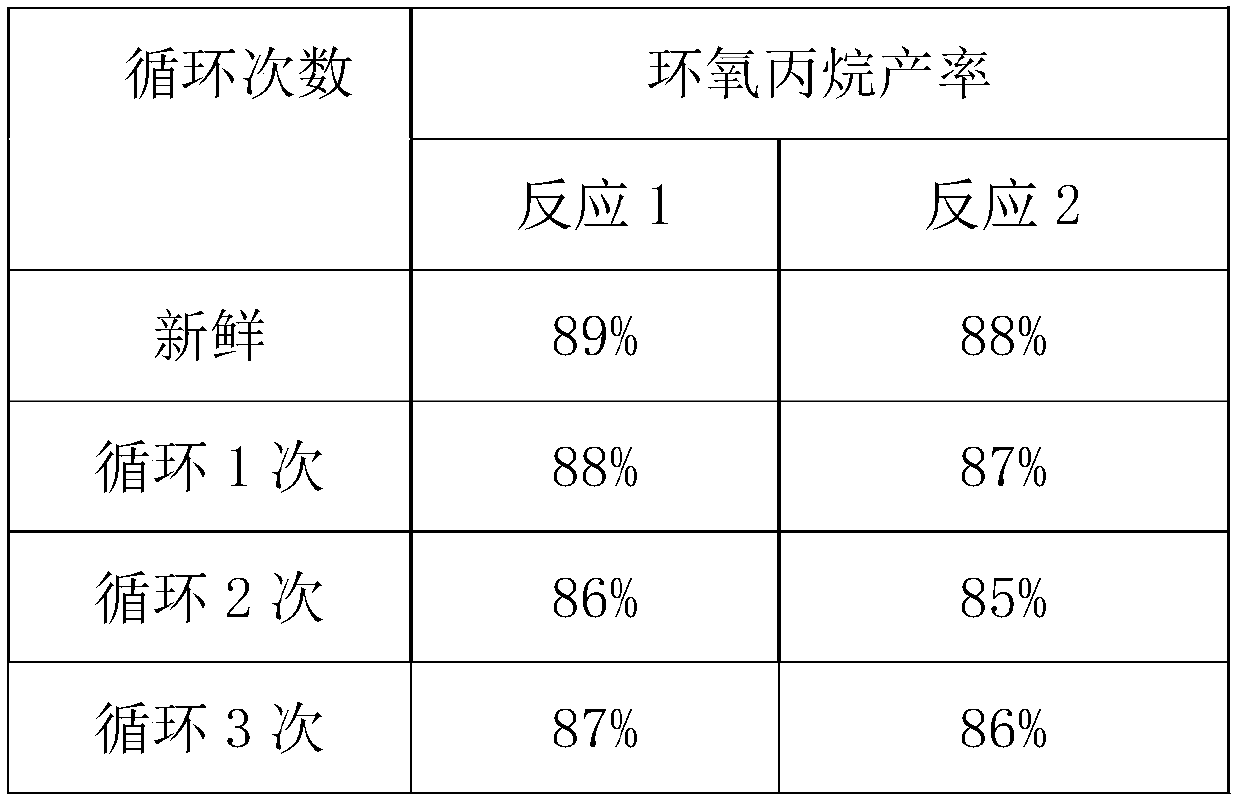Method for preparing epoxypropane through propylene epoxidation
A technology of propylene oxide and epoxidation, applied in the direction of organic chemistry, can solve the problems of low concentration, unfavorable and high energy consumption of separation of propylene oxide system
- Summary
- Abstract
- Description
- Claims
- Application Information
AI Technical Summary
Problems solved by technology
Method used
Image
Examples
Embodiment 1
[0024] Preparation of catalyst: Reference Journal of Molecular Catalysis A, 2001, 166:219.
[0025] Weigh 2.50 g of tungstic acid and add it to 10 ml of hydrogen peroxide with a concentration of 30%, and heat to 60° C. while stirring. A colorless and transparent solution is obtained after 60 minutes. At room temperature, 0.29 g of phosphoric acid with a concentration of 85% was added to the solution, 20 ml of distilled water was added, and stirring was continued for 30 minutes. Weigh 2.5g of cetyltrimethylammonium chloride and dissolve it in 40ml of dichloroethane. Add this solution to the above-mentioned hydrogen peroxide solution quickly at room temperature, and continue to stir for 60 minutes to obtain a precipitate. Wash the precipitate with distilled water until the pH of the filtrate is approximately 4. The filtrate is vacuum dried at 50-60°C to obtain a quaternary ammonium phosphotungstic acid catalyst.
[0026] Distilled water pretreatment of the working solution: In a 25...
Embodiment 2
[0029] The cetyl trimethyl ammonium chloride in the preparation process of the catalyst of Example 1 was replaced with octadecyl trimethyl ammonium chloride; the cetyl trimethyl ammonium chloride was 0.5 during the distilled water pretreatment process g was changed to 0.2g of sodium dihydrogen phosphate; the reaction temperature of the epoxidation process was changed from 80°C to 70°C, and the reaction time was 4h. Through gas chromatography analysis, the yield of propylene oxide to hydrogen peroxide was 86%.
Embodiment 3
[0031] The toluene in the distilled water pretreatment process of Example 1 was changed to xylene, 60 ml of sulfolane was changed to 50 ml of diphenyl sulfone, and the water separation rate was 85%. The reaction temperature of the epoxidation process was changed from 80°C to 75°C, and the reaction time was 4.5h. Through gas chromatography analysis, the yield of propylene oxide to hydrogen peroxide was 82%.
PUM
 Login to View More
Login to View More Abstract
Description
Claims
Application Information
 Login to View More
Login to View More - R&D Engineer
- R&D Manager
- IP Professional
- Industry Leading Data Capabilities
- Powerful AI technology
- Patent DNA Extraction
Browse by: Latest US Patents, China's latest patents, Technical Efficacy Thesaurus, Application Domain, Technology Topic, Popular Technical Reports.
© 2024 PatSnap. All rights reserved.Legal|Privacy policy|Modern Slavery Act Transparency Statement|Sitemap|About US| Contact US: help@patsnap.com








